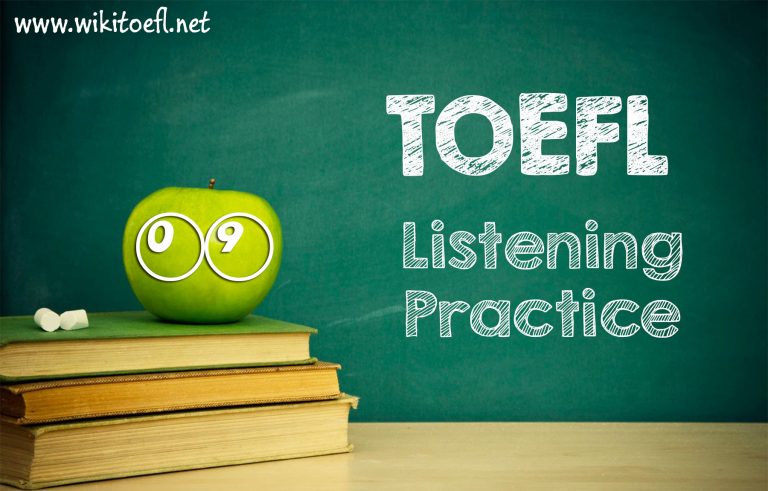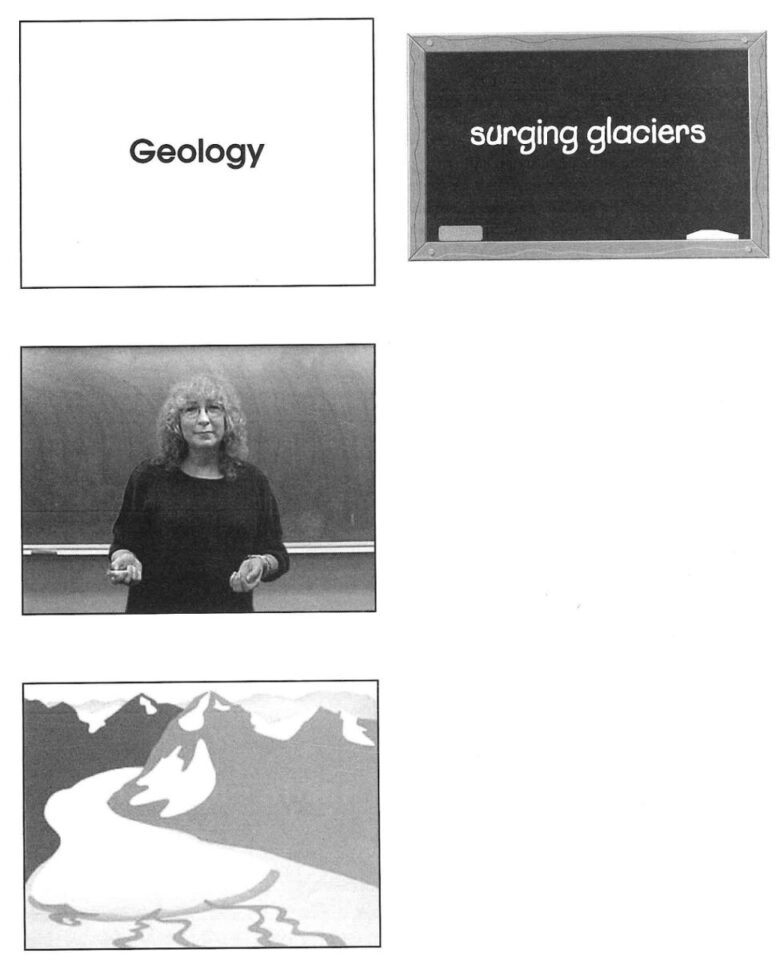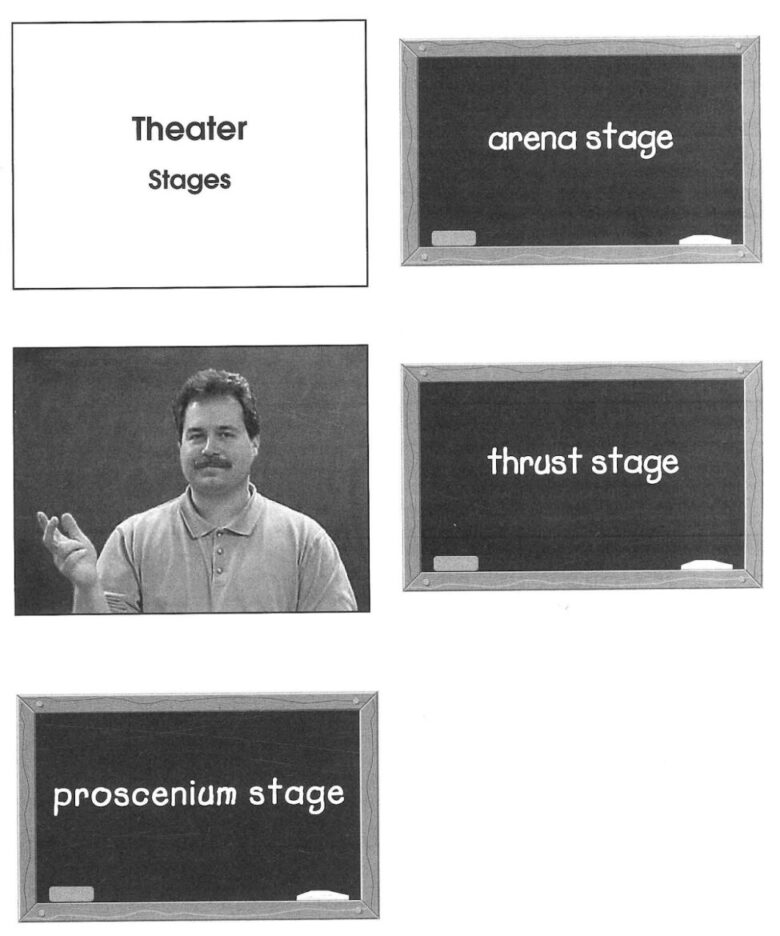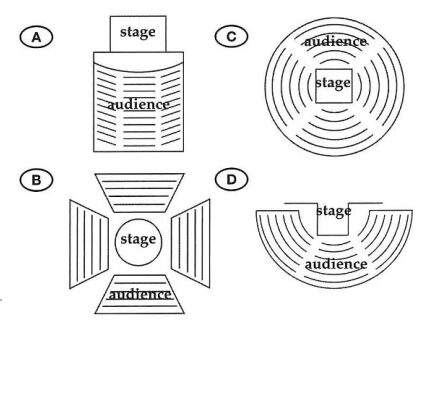TOEFL IBT Listening Practice Test 09 from Delta’s Key to the Next Generation TOEFL Test
Listening Section Directions
The Listening section measures your ability to understand conversations and lectures in English. You will hear each conversation and lecture only one time. After each conversation or lecture, you will hear some questions about it. Answer the questions based on what the speakers state or imply.
You may take notes while you listen. You may use your notes to help you answer the questions. In some questions, you will see this icon: . This means that you will hear, but not see, part of the question.
Some questions have special directions, which appear in a gray box. Most questions are worth one point. If a question is worth more than one point, the directions will indicate how many points you can receive. You will now begin the first part of the Listening section.
TOEFL IBT Listening Practice Test 09 from Delta’s Key to the Next Generation TOEFL Test Audio
https://www.youtube.com/watch?v=3NcjZit9S_k
QUESTIONS 1-5
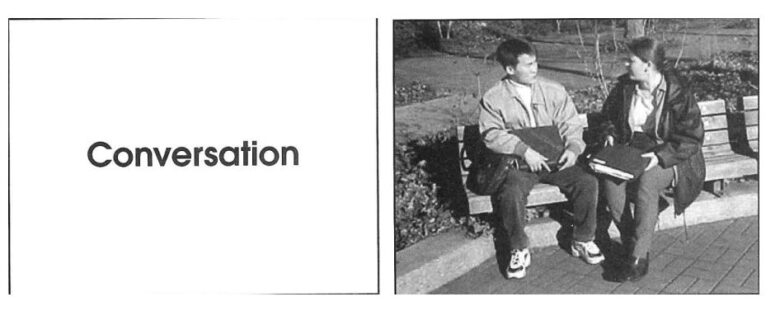
1. What are the students mainly discussing?
A. The man’s favorite style of music
B. The woman’s love of sculpture
C. The man’s upcoming art show
D. The woman’s recent photographs
2. How does the man probably feel when he says this:
(A) “1 hope that a lot of people come to the opening reception.”
(B) “I am concerned that your friends will not understand my work.”
(C) “I am surprised that my sculpture is getting so much attention.”
(D) “I feel nervous about meeting the Friends of the Gallery.”
3. Which features are included in the man’s sculpture?
Click on two answers.
A. Various types of metal
B. Boxes of different colors
C. Several white objects
D. Different styles of music
4. How did the man get the idea for his sculpture?
(A) He listened to the same music on different CD players.
(B) He looked at photographs of different types of boxes.
(C) He read an article about how people see music as colors.
(D) He studied the philosophy of the Friends of the Gallery.
5. Why does the woman say this:
(A) To persuade the man to look at the catalog
(B) To explain a possible use of her photograph
(C) To describe her favorite place to study on campus
(D) To imply that the dean will like the man’s sculpture
QUESTIONS 6-11
6. What is the lecture mainly about?
Click on two answers.
A. The world’s largest glaciers
B. How glaciers are created
C. The movement of glaciers
D. Why glaciers are melting
7. What point does the professor make about the snow that forms a glacier?
A. It is conserved.
B. It is light and fluffy.
C. It is denser than ice.
D. It is very dirty.
8. Listen again to part of the lecture. Then answer the question.
Why does the professor say this:
(A) To explain why it snows frequently in the mountains
(B) To show why mountain scenery attracts many visitors
(C) To describe conditions that lead to glacier formation
(D) To compare mountain glaciers with Arctic ice sheets
9. The professor briefly explains a process that occurs in mountain valleys. Indicate whether each sentence below is a stage in the process.
For each sentence, click in the correct box.
| Yes | No | |
| Precipitation falls as freezing rain or ice pellets. | ||
| Snow accumulates and gradually turns into ice. | ||
| Minerals in the meltwater change the texture of snowflakes. | ||
| Snow crystals become rounded and coarse, like grains of sugar. | ||
| Weight and movement compress the air out of ice crystals. |
10. Why are some glaciers called surging glaciers?
(A) They move much faster than other glaciers.
(B) They form during one winter-summer cycle.
(C) They continuously change form as they move.
(D) They add a lot of silt to mountain rivers.
11. Listen again to part of the lecture. Then answer the question.
What can be inferred about glaciers in warmer climates?
(A) They are drier than glaciers in very cold climates.
(B) They can change the shape of a mountain valley.
(C) They are found on only one side of a mountain.
(D) They move more quickly during the winter.
12. What does the professor imply about the various types of stages?
(A) Each design gives the audience a different experience.
(B) All three types were created at the same time in history.
(C) The proscenium theater accommodates the largest audience.
(D) Theater schools usually focus on one of the three types.
13. Which of the following is a disadvantage of the proscenium stage?
(A) The proscenium stage does not allow for scenery or scene changes.
(B) The people sitting in the back rows cannot hear what the actors say.
(C) The proscenium creates a barrier between the actors and the audience.
(D) Ticket prices are higher for plays produced in proscenium theaters.
14. Which type of performance would probably best be produced on an arena stage?
(A) A story requiring several scene changes
(B) An intimate drama about everyday life
(C) A play in which distance is an advantage
(D) An opera with elaborate sets and costumes
15. Why does the professor say this:
A. To explain why he likes the circle stage
B. To show that dance is important in theater
C. To describe the origins of the arena stage
D. To promote the study of traditional drama
16. Which diagram represents the thrust stage theater?
17. According to the professor, why is the thrust stage theater the most widely used of the three designs?
Click on two answers.
A. It combines the advantages of the other two styles.
B. The other two designs are more expensive to build.
C. It is the stage that most actors and directors prefer.
D. Many great plays were written for the thrust stage.
QUESTIONS 18-22
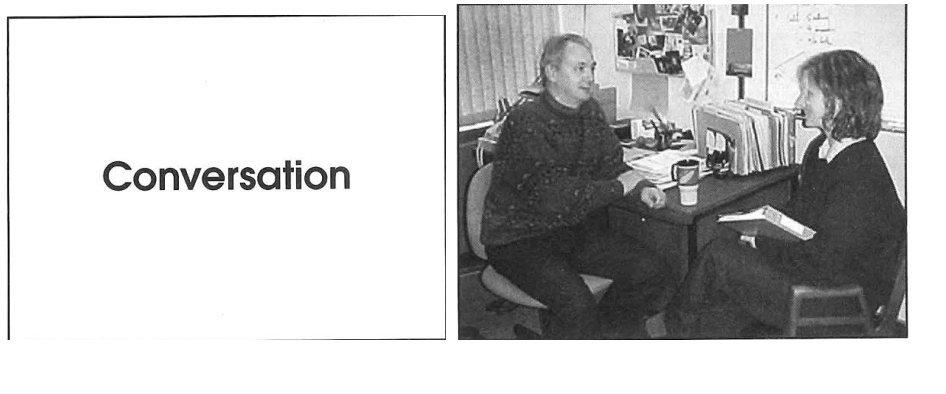
18. Why does the student go to see her professor?
(A) She is thinking of changing her field of study.
(B) She needs advice about a problem with geese.
(C) She wants to discuss the topic of her research.
(D) She will not be able to complete her research.
19. Listen again to part of the conversation. Then answer the question.
Why does the student say this:
(A) To ask for advice about a problem that she has with geese
(B) To explain why she wants to change the focus of her research
(C) To express her opinion about geese in urban areas
(D) To tell a story about an accident that she experienced
20. What does the professor mean when he says this:
(A) Results are tragic when airplanes strike birds.
(B) Sightings of birds from aircraft are unusual.
(C) Airplanes do not frighten away most birds.
(D) There is little similarity between birds and jets.
21. According to the conversation, which statements about peregrine falcons are true?
Click on two answers.
A. They naturally prey on geese and ducks.
B. They are the largest of all predatory birds,
C. They are more intelligent than geese.
D. They can fly faster than any other bird.
22. What is the student’s opinion of the falcon program?
(A) It is not as effective as shooting problem birds.
(B) It should be discontinued because it is too expensive.
(C) It is a good opportunity to promote peregrine falcons as pets.
(D) It is interesting because it uses biology to solve a problem.

